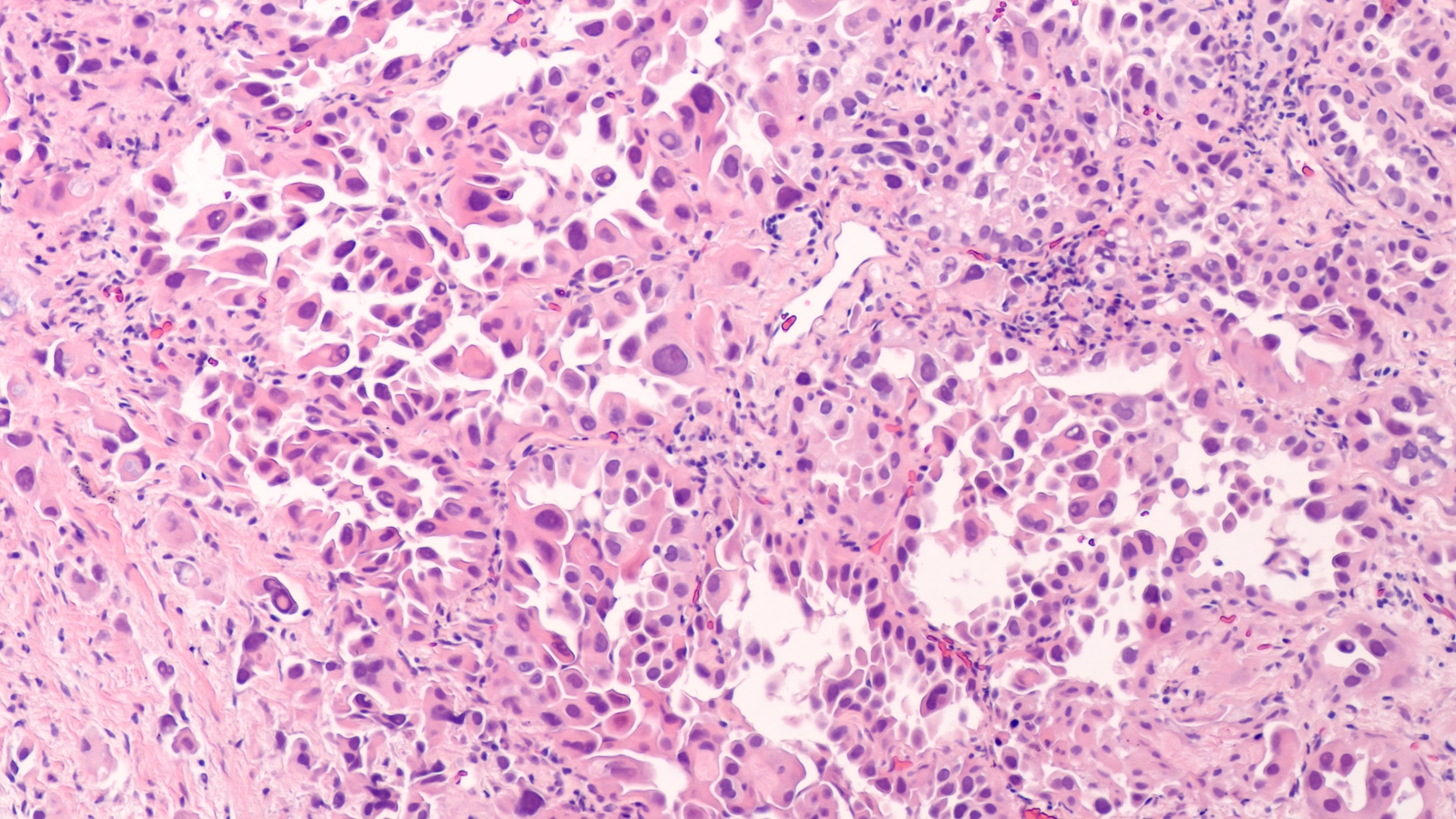Publication
Article
Evidence-Based Oncology
Implementing an Oncology Precision Medicine Clinic in a Large Community Health System
Author(s):
Precision medicine is increasingly being utilized in oncology. Aurora Health Care has implemented Syapse software to integrate molecular data into the electronic health record to accommodate precision medicine findings.
What Is Precision Medicine?
Precision medicine (PM) has various definitions, and several terms are used in association with it, including personalized medicine, genomic medicine, and individualized medicine. Delivered based on our understanding of molecular alterations to cancer cells, examples of individualized (or personalized) therapy include targets and inhibitors of the epidermal growth factor receptor, anaplastic lymphoma kinase, human epidermal growth factor receptor 2, and other molecular targets. An early, and likely the best, example is the use of imatinib to treat chronic myelogenous leukemia.
In his editorial, “Can We Define and Reach Precise Goals for Precision Medicine in Cancer Care?”1 Howard West notes, “Despite the intoxicating appeal of an imminent future in which the majority of patients can have their cancer’s molecular drivers decoded and eradicated by a customized agent or cocktail, a sober view of the evidence, particularly as derived from prospectively designed trials of personalized medicine, should lead us to fear that our current oncology community will be guilty of hubris and of overpromising, what we can deliver in a realistic time line.” Part of this caution stems from results like those from the French SHIVA trial,2 which found no progression-free survival (PFS) or overall survival benefit in patients treated based on their molecular profiling (using drugs available in France). A similar viewpoint published in JAMA in 2015 asked “Seven Questions for Personalized Medicine.”3
Despite this trepidation of adopting PM as a standard-of-care treatment, there are examples of studies showing benefit. In the seminal study from Von Hoff and colleagues4 and, more recently by Radovich et al,5 the metric of PFS ratio—that is, PFS new (molecularly chosen drug) to PFS old (prior therapy)—has shown promise for use in individuals (n-of-one trial). Another study, by Haslem and colleagues, found a PFS hazard ratio of 0.47, showing a precision medicine benefit in the community setting.6 Further, the PM patients had lower costs per PFS week than the control group. In addition, Schwaederle et al performed a meta-analysis of 13,203 patients with phase 1 refractory cancer in clinical trials.7 They found that a personalized strategy was independently correlated with improved response rate (30.6% vs 4.9%; P <.0001) and prolonged median PFS (5.7 vs 2.95 months; P = .0002). Also, phase 1 clinical trials that used targeted agents without a biomarker-based selection strategy had negligible response rates.
Herein we report on the advantages of implementing an oncology precision medicine (OPM) clinic, including installation of a Syapse precision medicine data integration platform (Syapse Inc, Palo Alto, California), in a large community health system.
OPM Clinic Workflow
Oncologists throughout our healthcare system may utilize the OPM clinic in 2 ways. In some cases, providers choose to refer their patients to the OPM team to coordinate the entire process. In this scenario, the patient meets with the team at a centralized location within the healthcare system for a 60-minute initial visit during which a physician introduces the concepts of PM and molecular testing. Subsequently, a molecular test is ordered for the patient from an outside vendor, using archived tissue, or a new biopsy is performed. Once the results are available, the case is discussed by the Molecular Tumor Board (MTB), a body comprising medical oncologists, surgical oncologists, molecular pathologists, genetic counselors, pharmacists, cancer nurse navigators, and research coordinators to discuss the patient’s case and formulate recommendations. The patient then returns to the OPM clinic for a second visit with one of our physicians to discuss the results and suggested treatments in detail. Ultimately, all information and recommendations are communicated to the referring oncologist for consideration during the subsequent treatment steps. The OPM team will facilitate referrals to genetic counseling, research protocol screening, or drug insurance coverage as needed.
In other cases, treating oncologists will choose to coordinate the molecular testing and associated education themselves, and send the results for discussion by the same MTB. In that scenario, although the OPM team never meets the patient in clinic, they can still offer recommendations to the treating oncologist.
Syapse
Syapse is a software product with several functionalities relevant to PM programs.8 The most basic functionality is pulling raw molecular panel data into the electronic health record (EHR). Most molecular panel data exist in Adobe (as PDF files), with detailed descriptions and summaries; some companies also offer proprietary online portals and databases. Additionally, Syapse can be used to sort molecular data from various sources for running reports and understanding test usage and correlation with clinically relevant endpoints.
Additional utility may be realized by its applicability as an online real-time resource for MTBs. Syapse’s Oncology Precision Network (OPeN) allows aggregated cancer genomics data to be pulled from all participating health systems. This capability could aid in understanding de-identified genotype—phenotype correlations much earlier than possible case reports or case series publications. For example, if a patient within the network with a specific tumor type, genotype, or drug treatment did or did not respond to treatment, the information will be available to the network. This may lead to faster development of clinical trials in various patient subsets. Syapse anticipates that, when fully implemented, OPeN will impact 104,000 new cancer patients per year, representing 3% of the nation’s total cancer population. Based on new partners joining the network, current projections are for 780,000 total cases in 2018, and 1.1 million total historical cases by the end of 2019.
Pathologist’s Role
Pathologists play a variety of roles within PM, the foremost being an intrinsic role in the diagnosis of cancer. When a pathologist is present at the time of biopsy, he or she ensures there is adequate tissue to make a diagnosis and allocates the specimen for any necessary ancillary tests, such as immunohistochemistry or flow cytometry. As more diagnoses are made on small tissue biopsies, it is important for pathologists to be judicious in their use of these ancillary tests.
Following diagnosis, pathologists are responsible for the maintenance and storage of tissue samples. When molecular analysis is ordered, the pathologist reviews whether there is enough tissue to perform such testing and selects the optimal sample to be sent either to an in-house or a specialized molecular laboratory. The pathologist can provide insights into specific diagnoses and test results and facilitate appropriate ordering for standard-of-care testing (eg, acute myeloid leukemia molecular tests) as well as testing in OPM.
Administrative Issues in an OPM Clinic
It is our belief that PM will change the entire approach to cancer treatment. In this time of upheaval in the healthcare industry, this concept must be weighed as it relates to value-based care. Molecular-based treatments, despite their potential effectiveness when used appropriately, can be very expensive on a per-case basis. Although tumor genetic analysis has shown greater similarity among cancer types than within a specific tumor identified by organ site, most genetic tests are returned to our physicians in the form of lengthy PDF files, making it hard to incorporate results into the EHR and often difficult to retrieve after initial review. As we looked toward developing our OPM program, we realized the importance of obtaining and accessing the molecular data in a more granular manner, such that it could be easily accessed for patient care. From an administrative perspective, we explored companies whose software met the following criteria:
- Data can be transferred from different testing companies or labs and be accessible in the EHR
- Data can be readily retrievable in the long term
- Data can be easily matched to specific clinical trials
- Results can be compared with other patients with the same molecular profile to investigate past responses to a given agent
Following a review of several providers who offer management of molecular data, we believed Syapse was the best option to accomplish these goals. Its platform is essentially source-agnostic regarding which company performed the testing, and it has the capability to analyze raw data from the molecular vendor instead of just PDF files; the data also is readily retrievable. By joining the consortium of health systems on the Syapse platform, we would be eligible to join OPeN (as described above), thereby allowing us to provide evidence-based care to our patients without a long delay. This feature is consistent with the Cancer Moonshot program organized by former Vice President Joe Biden and funded by the Cancer Care Act of 2016. For these reasons, we elected to incorporate the Syapse platform into our OPM program and institutional EHR.
We are cognizant that payers will be evaluating the value of molecular panels and molecularly guided therapy. The data from Syapse and OPeN can provide large datasets to complement studies by Haslem et al6 in tumor panels and Trosman et al9 in hereditary cancer panels.
Role of the Genetics Provider
An integral component of an OPM clinic is the team of genetics providers, including genetic counselors, medical geneticists, and advanced practice nurses in genetics. Next-generation sequencing (NGS) can identify germline pathogenic variants in addition to somatic pathogenic variants—studies have shown that between 3% and 16% of individuals undergoing somatic NGS harbor a germline pathogenic variant depending on the number of genes tested.10,11 However, due to differences in variant interpretation and the lack of testing for large-copy number variations in most somatic NGS tests, some patients may have a germline pathogenic variant not identifiable on a somatic NGS tumor test.
Incorporating a genetics provider into an OPM clinic also can help educate patients about the possibility of identifying a hereditary cancer syndrome prior to initiating NGS or after a somatic NGS test is performed. Genetics providers can help determine which patients need additional germline genetic testing.
Once results are returned, the genetics provider can perform a hereditary cancer risk assessment by reviewing the patient’s personal and family history within the context of the somatic NGS results. However, because sporadic cancers can have somatic pathogenic variants in common hereditary cancer syndrome genes (eg, APC, BRCA1, BRCA2, and TP53), pathogenic variants identified in these genes do not always indicate that germline genetic testing is needed.12 If a hereditary cancer syndrome is identified, not only can it help guide therapeutic decisions (eg, use of BRCA1/2 or PARP inhibitors), but it can influence cancer screening and prevention recommendations for both the patient and family members.
Centering Care Around the Patient
In an OPM clinic, the patient is brought into the center of this OPM mechanism in a very real way. Patients who attend the clinic meet with some of the OPM team members, during which time they are interviewed and their goals assessed. The conversation also includes discussions on:
- The advantages and limitations of genomic testing on their specific tumor type
- The possibility of finding targets that may indicate treatment medications
- The possibility of finding genetic traits that run in the family, which may impact their family’s risk of cancer
- The cost of genomic testing
Bringing the patient into the clinic to discuss molecular testing has numerous advantages:
- We have time to discuss the benefits and disadvantages to help the patient understand how the process works
- It allows us to connect genomic data with the unique patient and biopsychosocial milieu
- We can expedite biopsy or blood draws to obtain DNA samples, complete paperwork for drug acquisition, and gauge insurance coverage of testing
In short, the OPM clinic takes the rather complex process out of the busy oncology clinic and provides services to both patients and oncologists, from assessing and educating to ordering testing to obtaining the appropriate medications.
Conclusions
Prior studies showing a lack of benefit from PM may reflect a need for optimized patient selection, greater understanding of systems biology, and knowledge integration through technology such as Syapse. The overall success of PM will be determined by ongoing evaluations of its value, both in individual patient terms and across health systems.
Ackowledgements
We appreciate the editing help of Joe Grundle of Aurora Research Institute (Milwaukee, WI). Part of our institution’s oncology precision medicine clinic was funded by the Vince Lombardi Cancer Foundation (Milwaukee, WI).AUTHOR INFORMATION
Michael A. Thompson, MD, PhD, is medical director of early-phase cancer research at Aurora Research Institute.
Jennifer J. Godden, PharmD, is a specialty pharmacy coordinator, Oncology, at Aurora Research Institute.
Scott M. Weissman, MS, CGC, is a genetic counselor at Aurora Health Care.
Deborah Wham, MS, CGC, is a genetic counselor at Aurora Health Care.
Amanda Wilson, MD, is a pathologist at Aurora Health Care.
Antony Ruggeri, MD, is a medical oncologist at Aurora Health Care.
Michael P. Mullane, MD, is a medical oncologist and medical director, Hereditary Cancer and Prevention Center, Aurora Health Care.
James L. Weese, MD, FACS, is vice president, Aurora Cancer Care.
ADDRESS FOR CORRESPONDENCE
Michael A. Thompson, MD, PhD
960 N 12th St, Room 4111
Milwaukee, WI 53233
E-mail: Michael.A.Thompson@aurora.org
FUNDING SOURCE
Part of our institution’s oncology precision medicine clinic was funded by the Vince Lombardi Cancer Foundation (Milwaukee, WI).REFERENCES
1. West HJ. Can we define and reach precise goals for precision medicine in cancer care? J Clin Oncol. 2016;34(30):3595-3596. doi: 10.1200/JCO.2016.68.8226.
2. Le Tourneau C, Delord JP, Goncalves A, et al; SHIVE Investigators. Molecularly targeted therapy based on tumour molecular profiling versus conventional therapy for advanced cancer (SHIVA): a multicentre, open-label, proof-of-concept, randomised, controlled phase 2 trial. Lancet Oncol. 2015;16(13):1324-1334. doi: 10.1016/S1470-2045(15)00188-6.
3. Joyner MJ, Paneth N. Seven questions for personalized medicine. JAMA. 2015;314(10):999-1000. doi: 10.1001/jama.2015.7725.
4. Vont Hoff DD, Stephenson JJ Jr, Rosen P, et al. Pilot study using molecular profiling of patients’ tumors to find potential targets and select treatments for their refractory cancers. J Clin Oncol. 2010;28(33):4877- 4883. doi: 10.1200/JCO.2009.26.5983.
5. Radovich M, Kiel PJ, Nance SM, et al. Clinical benefit of a precision medicine based approach for guiding treatment of refractory cancers. Oncotarget. 2016;7(35):56491-56500. doi: 10.18632/oncotarget.10606.
6. Haslem DS, Van Norman SB, Fulde G, et al. A retrospective analysis of precision medicine outcomes in patients with advanced cancer reveals improved progression-free survival without increased health care costs. J Oncol Pract. 2017;13(2):e108-e119. doi: 10.1200/JOP.2016.011486.
7. Schwaederle M, Zhao M, Lee J, et al. Impact of precision medicine in refractory malignancies: a meta-analysis of 13,203 patients in phase I clinical trials. J Clin Oncol. 2016;34(suppl 15):11520-11520. doi: 10.1200/JCO.2015.61.5997.
8. Syapse website. http://www.syapse.com/. Accessed June 18, 2017.
9. Trosman JR, Weldon CB, Douglas MP, et al. Payer coverage for hereditary cancer panels: barriers, opportunities, and implications for the precision medicine initiative. J Natl Compr Canc Netw. 2017;15(2):219-228.
10. Jones S, Anagnostou V, Lytle K, et al. Personalized genomic analyses for cancer mutation discovery and interpretation. Sci Transl Med. 2015;7(283):283ra53. doi: 10.1126/scitranslmed.aaa7161.
11. Schrader KA, Cheng DT, Joseph V, et al. Germline variants in targeted tumor sequencing using matched normal DNA. JAMA Oncol. 2016;2(1):104-111. doi: 10.1001/jamaoncol.2015.5208.
12. Jain R, Savage MJ, Forman AD, Mukherji R, Hall MJ. The relevance of hereditary cancer risks to precision oncology: what should providers consider when conducting tumor genomic profiling? J Natl Compr Canc Netw. 2016;14(6):795-806.

Newsletter
Stay ahead of policy, cost, and value—subscribe to AJMC for expert insights at the intersection of clinical care and health economics.






